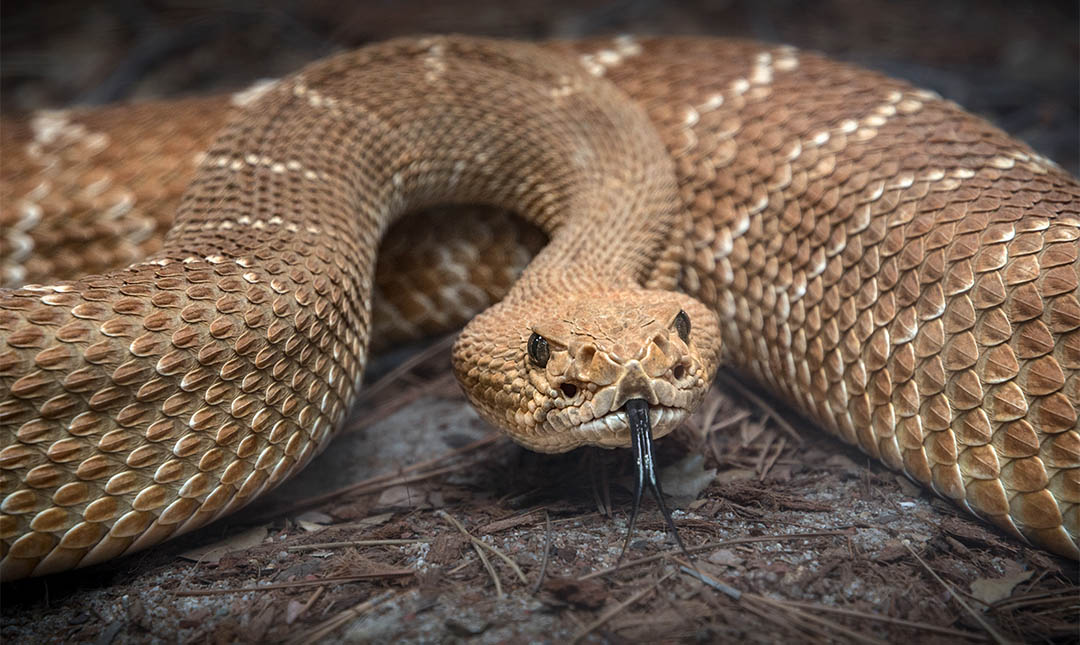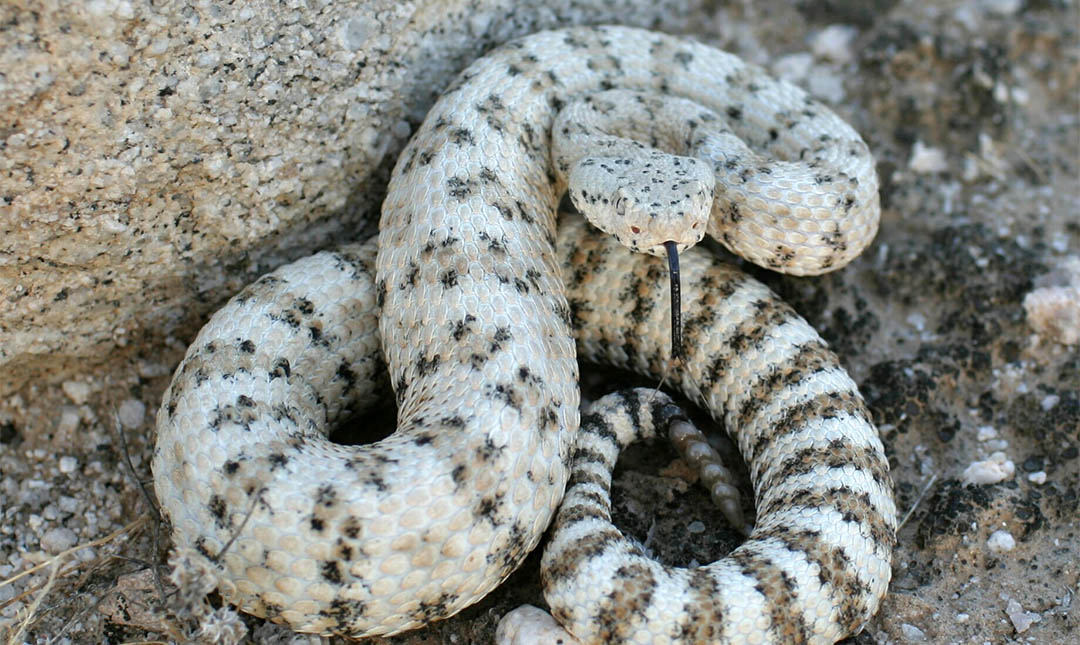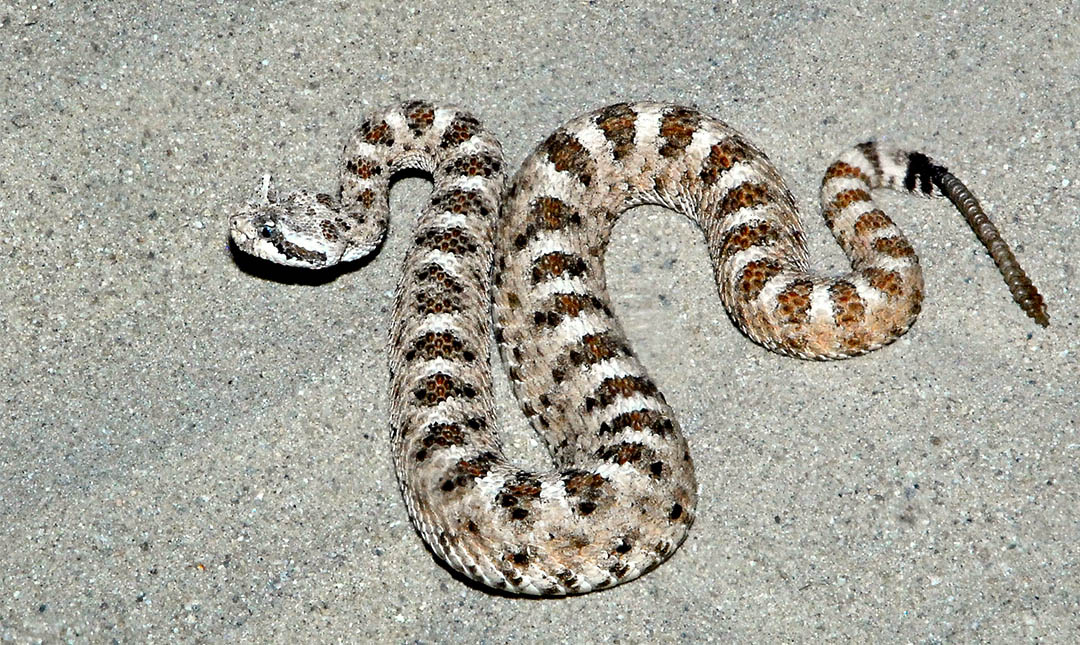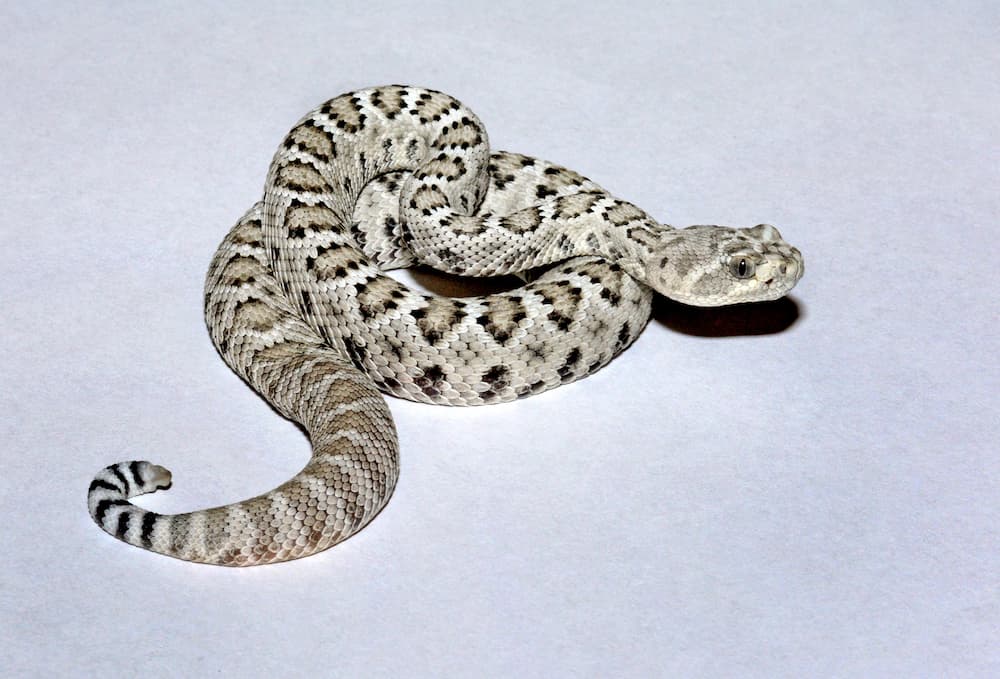About
Rattlesnakes are easily identified by their broad, triangular heads and the rattles at the ends of their tails. The rattles consist of hollow segments of keratin (the same substance as human hair and nails) that fit loosely together so that when the snake shakes its tail, they produce a distinctive sound. The rattle is a warning to predators to leave these snakes alone, and it is so effective that a number of non-venomous snakes mimic the noise by shaking their tails in leaf litter. Every time the snake sheds, another rattle is added. However, rattles can break and fall off, so it is not possible to determine a snake’s age by the number of segments in its rattle.
Large glands in the snake’s head produce venom that is channeled into the long fangs through a hollow canal. These specialized teeth are hinged and fold back when not in use. The primary purpose of the venom is to immobilize prey, and many defensive strikes are “dry bites,” lacking venom. However, if necessary, a rattlesnake will use venom to deter predators. Rattlesnakes use heat-sensing pits located between their eyes and noses to detect and strike warm-blooded prey. They can detect less than a one-degree F difference in the temperature of an object and the surrounding air. Rattlesnakes are ambush predators, striking quickly and then waiting from a safe position for the venom to take effect. Prey is typically eaten headfirst and swallowed whole. During breeding season, male rattlesnakes compete with one another for mating privileges. They wrestle in an elegant and rigorous sparring match in the presence of the female that is thought to be vital for successful breeding. Female rattlesnakes retain eggs inside their bodies until the offspring are ready to emerge. Although this process resembles a mammalian birth, reptiles do not have wombs.
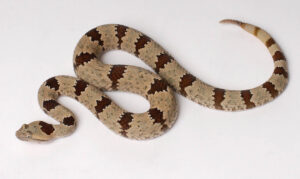
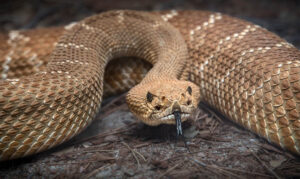
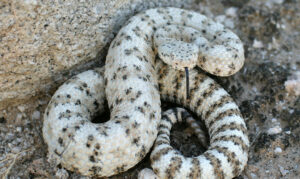

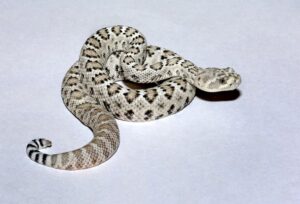
Most rattlesnakes in the Zoo’s collection are classified as Least Concern except for:
- Santa Catalina Island rattlesnake – Critically Endangered
- Aruba Island rattlesnake – Critically Endangered
Other species the Zoo works with include:
- banded rock rattlesnake (Crotalus lepidus klauberi)
- Durango rock rattlesnake (Crotalus lepidus)
- Mexican west coast rattlesnake (Crotalus basiliscus)
- Mojave Desert sidewinder (Crotalus cerastes)
- southern Pacific rattlesnake (Crotalus helleri)
- red diamond rattlesnake (Crotalus ruber)
- southern ridgenose rattlesnake (Crotalus willardi)
- southwestern specked rattlesnake (Crotalus mitchellii)
- Tamaulipan rock rattlesnake (Crotalus morulus)
- Mexican lance-headed rattlesnake (Crotalus polystictus)
Habitat
Sixty species in two genera of rattlesnakes are found in North and South America. They live in deserts, scrublands, grasslands, and even rainforests from Canada south to northern Argentina. However, the greatest number of species and the largest populations are found in the deserts of the southwestern U.S. and Mexico.
Diet
These snakes are obligate carnivores, consuming primarily lizards and small rodents.
Physical Characteristics
Rattlesnakes vary in length from 1 to 8 feet, depending upon the species. They typically weigh between 2 and 10 pounds. Lifespan averages 10 to 20 years.

